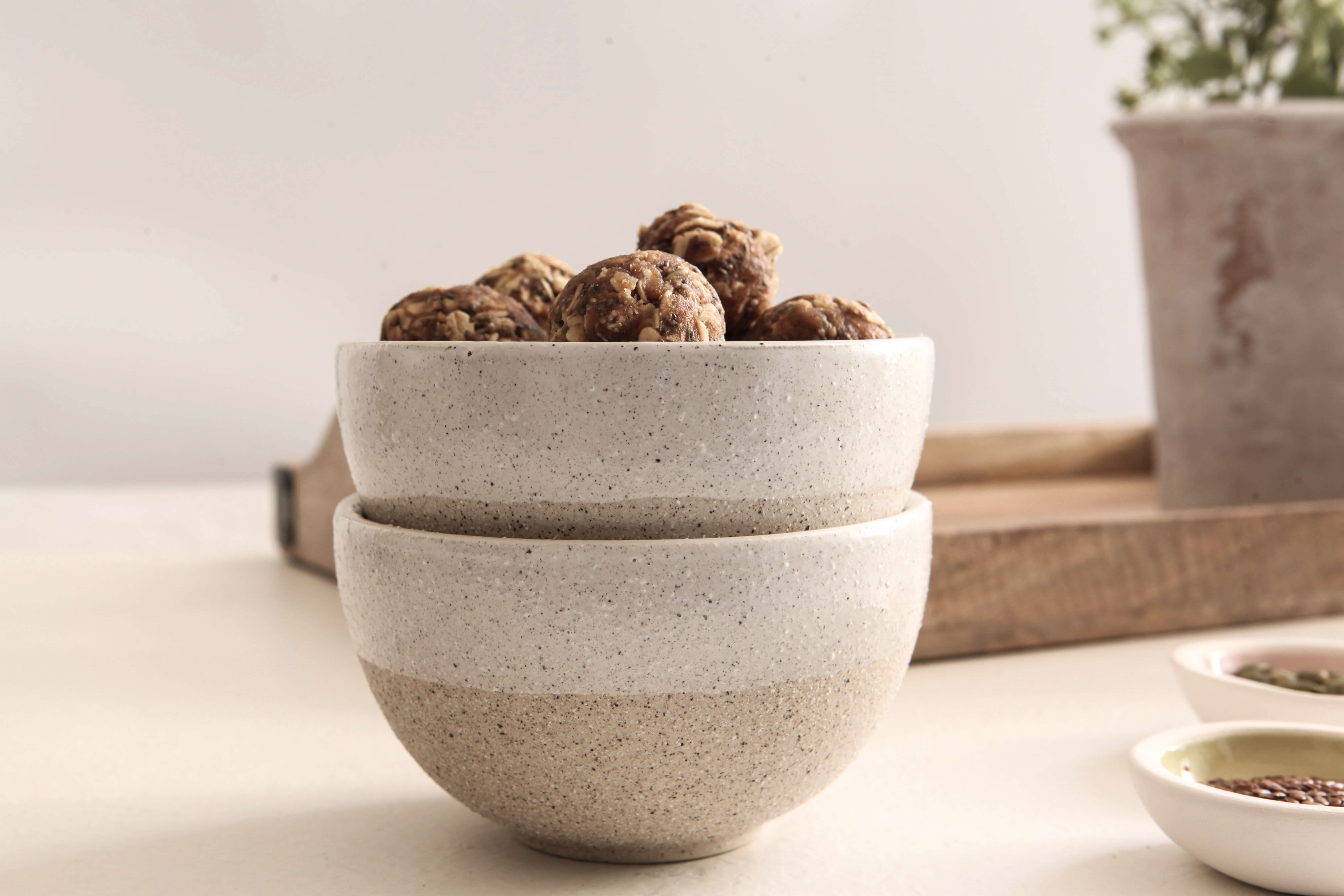One of the most common probiotic supplements for gut health questions I’m asked is, “Is there a difference between refrigerated probiotics vs non refrigerated?”
So that’s what I am here to address today to help you understand it all in far greater detail.
If you want the ultra-short answer and just want to skip this entire article, feel free to (though I’d advise reading about it all in detail).
The bottom line is this:
A good probiotic should not need to be refrigerated!
However, the answer is much more nuanced as you’re about to see.
The Goal of a Probiotic?
Probiotics are active cultures of bacteria that can colonize in your gut.
This helps to reestablish healthy levels of bacteria within your small intestine and large intestine, which can be a game-changer for your overall health.
A healthy gut microbiome (the collection of bacteria, yeasts, and other microbes) help not only to digest food, but also to manufacture vitamins, prevent harmful pathogens, regulate immune health and connect to mood.
The integrity of your gut plays a key role in ensuring the rest of your body is functioning at its optimal position.
SOME OTHER FUNCTIONS OF HEALTHY BACTERIA IN THE GUT INCLUDE:
- ensuring health of gut barrier
- regulating enzyme action
- creation of cytokines (key player in immune system)
- functioning of nervous and endocrine systems
- creation of fatty acids
What’s more is that, while I’m constantly talking about probiotics as they relate to the gut, using probiotics has benefits that extend far beyond the gut microbiome.
In fact, HERE are 13 probiotic benefits beyond gut health.
Probiotic Bacteria Survivability
Now here’s the BIG IDEA for today: a probiotic is only as effective in providing the health benefits as how it reaches our gut microbiomes.

Microbiologist Kiran Krishan states,
Survivability is a very important characteristic of a probiotic because the globally accepted definition of “probiotic,” proposed by the WHO and widely accepted in the scientific community, is:
- A live microorganism that confers a health benefit to the host when administered in adequate amounts – meaning it has to be alive in order to function, and
- There has to be a dose response and clinical validation that it confers benefit.
Those are the two really important aspects of a true probiotic.
He continues,
One way you know you have a true probiotic is the strain is alive in the body. This means probiotic strains have to survive:
- Processing,
- Blending,
- Encapsulation,
- Bottling, and
- Shelf life storage (in warehouses and on shelves in retail stores), etc.
Even after all that, a true probiotic will still survive ingestion, which means it remains alive through:
- Stomach acid,
- Bile salts,
- Pancreatic enzymes, and
- Arrives in the intestines in a viable state (to colonize).
And all of this is A LOT!
Which bring me directly to…..
Refrigerated Probiotics vs Non Refrigerated
Click HERE to save this article regarding Refrigerated Probiotics vs Non Refrigerated probiotics for later.

What is a Refrigerated Probiotic?
Refrigerated probiotics are probiotic supplements that need to be kept refrigerated and out of higher temperatures to maintain their effectiveness.
The argument is that because probiotics are microorganisms that are sensitive to heat, humidity, air, and light, refrigeration helps preserve viability and maximum potency.
It has also been stated that refrigeration enables a longer shelf life by slowing down their natural degradation and ensuring they remain effective until expiry date.
Signs that the manufacturing process requires refrigeration include:
- Checking the product label for storage instructions, including whether or not it needs to be refrigerated.
- Seeing if the product is usually kept in the refrigerated section of a store or pharmacy
- Identify if the original packaging was shipped in an ice pack or insulated bag
What are Unrefrigerated Probiotics?
In contrast, unrefrigerated probiotics are bacteria that can survive at room and warm temperatures without needing cold temperatures to stay effective.
Unrefrigerated probiotics typically have longer shelf-lives than refrigerated probiotics.
The main difference is that extreme temperatures won’t affect unrefrigerated probiotics as they will affect refrigerated shelf probiotics.
Dietary Supplements Industry in Europe
Did you know that in Europe (where regulations on supplements like probiotic products are much tighter most (lacto-bifido-based) companies cannot even call their product a “probiotic?”
This is because when you put “probiotic” on your product, you’re making the claim that these organisms survive through the gastric system and get to the intestines alive and viable, where it provides a health benefit to the host.
If you can’t prove that, because your (lacto-bifido) strain does not survive the gastric system, then you’re NOT a probiotic. You’re something else.
And in order to determine this survivability, the probiotic must go through Gastric Survival testing.
Gastric Survival testing is used to determine the viability of probiotics by measuring how well they resist simulated gastric juice or intestinal fluid over time. During this test, the measurement is whether or not the probiotic bacteria are able to survive gastric acid, bile salts, pepsin, and pancreatin — which are essential for their effectiveness.
According to Kiran,
There’s a gastric modeling system that’s widely accepted and has been part of the U.S. Pharmacopoeia standards for a long time. It’s a Gastric Simulation study.
- You have a slurry which has hydrochloric acid and bile salts in the correct physiological levels to which you add your probiotic.
- Then you put it in a machine called a “stomacher.”
- The probiotic goes through the stomaching process for two hours (comparable to the average amount of time food remains in the human stomach).
- And then you pull out solution to see if the probiotic strain still alive.
That’s a standard Gastric Modeling study. You want to be able to show that your probiotic can survive through that.
IF a probiotic needs to be refrigerated, how would it make any sense that said probiotic could withstand all of those high temperatures?
There is no way to ensure a cold low temperature from the time a probiotic comes out of the refrigerator (even room temperature) and makes it through the entire digestive system.
If temperature fluctuations must be avoided, then the probiotic live bacteria will never arrive intact to your gut.
Refrigerated Probiotics
This article on refrigerated probiotics vs non refrigerated probiotics clearly leans towards non-refrigerated probiotics without strict storage requirements.
I firmly believe that the need for a cool environment is not conducive for a high quality probiotic; a fridge-stored probiotic is completely unnecessary (also ineffective).
But even still, I want to be sure to review refrigerated probiotics for your reference.
Here are some points you’ll find for refrigerated probiotic treatment:
- Other probiotics contain live cultures that need to be refrigerated to stay effective.
- Live microorganisms are usually very sensitive to temperature. Hot tempuratures and humidity make them weak. To get around this issue, some are freeze-dried probiotics. This process makes them shelf-stable probiotics, which means they stay effective even at room temperature.
- VSL is a refrigerated probiotic. They say it’s “clinically tested, boosts microbiota, and is for patients with Irritable Bowel Syndrome and ulcerative colitis.”
- Certain strains are more sensitive to heat and can die quickly if exposed to high temperatures.
- Many manufacturers recommend refrigerating certain types of probiotics, which can help keep the bacteria alive longer than storing them at room temperature.
- The most significant advantage of probiotics is that they remain potent for a longer period. The cold temperature slows down the bacteria’s metabolic processes, ensuring they stay alive and active until you take them.
Why the Just Thrive Probiotic WORKS (Survives)
Just Thrive sent out (for gastric survival testing, more than 30) probiotics that were lactobacillus and Bifidobacterium based, not spore bacillus, so that’s (the category of probiotics that) we’re talking about.
The spore strains were the only ones that survived.
Not all spores (in all spore probiotics) are going to survive because not all spores are created equal.
(Other spore probiotics) can be in one of two states.
It can be in a:
- Spore state, which is where it is protected. It’s got its protein calcified shell around it. It’s metabolically inactive at the moment and in that state, it can survive the harsh gastric system. Or, it can be in a
- Vegetative state, which is where it’s a multiplying, fermenting active cell. In that state, it will NOT survive the gastric system.
(Most spore probiotic companies harvest their spores from the fermenter when they’re still) in a vegetative and not spore state, they’re not in that protected state.
If you take that (non-spore) cell and you put it in a gastric system, it’s going to die.
To prevent that from happening, Just Thrive had to figure out a mechanism to get the (active spore) bacteria back into the (inactive) spore state before removing them from the fermentation tank. And then they standardized them in the spore form (so that testing shows a 100% survival rate).
This is a proprietary process that, when the Gastric Survival test was performed, all strains came out 100% alive.
A High-Quality Probiotic
It is my firm belief that a high-quality probiotic:
- Does NOT need to be refrigerated. It can survive high temperatures with no problem, while still providing all the beneficial bacteria.
- The right (not more necessarily) strains. “In fact,” Kiran states, (more strains is) what can actually be detrimental. You just don’t know unless you study those strains in combination.” 100 different strains of probiotics does not make the individual product better. He also states that, “Sometimes the overall group can be inflammatory or problematic for the consumer.”
- Has gone through a Gastric Survival test.
- More colony-forming units (CFU’s) is not always a good thing, nor is it (necessarily) a sign of a high-quality probiotic.
- Has researched specific strains of probiotics (and species!)
If you want more on these thoughts and more, you might check out THESE 8 Probiotic Myths.
If you liked this article, you might also enjoy:
- Spore Based Probiotics Benefits (+ my favorite spore based probiotic)
- Probiotic Foods vs Prebiotic Foods
- 46 Carminatives for Digestive Health
Disclosure: All opinions started here are 100% my own. I appreciate your support, as this compensation helps with expenses to keep this website up and running, and for me to continue sharing all that I can with you. Some of the links in this post are affiliate links. This means if you click on the link and purchase the item, I may receive a small commission at no extra cost to you.
Xox,
SKH
🤰 bloating be gone! weight loss through optimal gut health for women
💃ʜᴇᴀʟ ʏᴏᴜʀ ɢᴜᴛ. ʜᴇᴀʟ ʏᴏᴜʀ ʟɪfe.
🫶🏻 founder gutbyome.com







